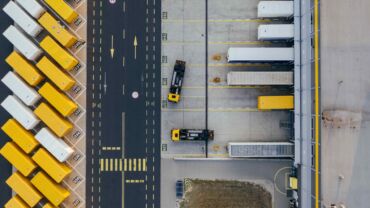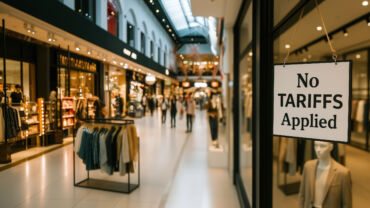Trade compliance and logistics have always been tightly interwoven, and the most successful companies understand how to manage both disciplines to avoid risk and take advantage of opportunities. But this fact has never been more true than right now, due to the extraordinarily volatile environment organizations find themselves in, especially in the United States, dealing with the fallout of President Trump’s approach to trade policy. To understand the extent of the impact, here’s a quick look at most (but not even all) of the changes that the new policies have brought:
- U.S. pulled out of TPP (Trans-Pacific Partnership) negotiations in January 2017.
- U.S. entered NAFTA re-negotiations with Canada and Mexico. Resulted in negotiation of the USMCA (United States-Mexico-Canada Agreement), which has been signed, but not ratified in any of the three countries.
- Section 232 Steel/Aluminum Case
- 25% on Steel/10% on Aluminum
- Retaliatory duties from all countries (5%-140%)
- Section 301
- 25% on Chinese Goods
- Retaliatory duties from China
- Section 232 Automotive Case
- Published in Federal Register 5/30/18
- Private report submitted by Commerce to President with Secretary’s recommendation on 2/17/19
- President Trump has until 5/18/19 to decide if he is going to act
- Removal of India and Turkey from GSP (Generalized System of Preferences) program
- Announced 3/4/19
- Pending Presidential Proclamation, then 60 days to effective date
- Section 301 Action on EU: helicopters and other items per WTO ruling
- 300 items
- Proposed duty rate not known until after WTO hearing held later this summer
As can be seen from the extent of increase in cost from higher duties and uncertainty from the FTA renegotiations, companies are constantly needing to re-evaluate their supply chains. The possible changes they may need to make are either “micro” in nature or “macro.”
An example of when many companies made micro changes was at the end of 2018. President Trump had been threatening for some time that the 10% duty rate on “List 3” of the Section 301 goods would move to 25% effective 1/1/19. In order to avoid such significant increased duty payments on orders planned to land early in 2019, many companies moved up their planned shipdates. By the time it was officially published on December 16 that the rate would not move to 25% on January 1 after all, most of those goods were either en route or too late to change the shipdate again.
Making changes of this sort is not something that a company’s trade compliance team handles alone, even if they are the department with the original knowledge to say “Houston, we have a problem!” Multiple departments need to get involved to assess if moving up orders is both desirable and even possible. The company needs to include sourcing/purchasing teams, logistics, financial, and distribution at a minimum to weigh in. The additional costs that can be incurred to bring in freight earlier than desired, such as off-loading/on-loading, cost-of-capital for paying invoices earlier than planned, possibly warehouse rental/temporary labor costs may not make the duty savings worth it. And it’s also possible that the supplier may not be able to ship early.
Macro changes, when a company looks to change an entire supply lane or vendor/manufacturer, are even more complex. In addition to involving all these same parties, the organization and many of those same other internal teams will need to work with their third-party providers to manage the changes. For example, before moving sourcing from China to Indonesia, just because the duty is lower, the logistics team needs to assess their carrier contracts for comparative rates, transit times, and even if the shipping lanes are supported.
Sourcing teams may need to work with other third-party providers such as a testing lab to ensure that a new supplier can have their goods tested to meet the regulatory requirements of the various agencies in the import country. Sometimes that may require months to find a new provider to work with in a new country.
With these significant changes, importers are looking at other ways to avoid or mitigate these costs. Key among these are:
- Utilizing more robust and sophisticated visibility tools
- Reporting solutions such as the ONESOURCE Global Trade Visibility product provide a way to identify your company’s impact from the many changes happening all at once.
- Functionalities such as “what if” planning in such a solution can assist a company in making supply chain changes and understanding ahead of time what the financial impact will be.
- Duty deferral programs, such as the Foreign-Trade Zone program in the U.S.
- Zones allow importers to hold imported goods without paying duties until they ship into commerce.
- Zones also allow for export of goods without ever paying for duties, completely avoiding the payment of these elevated duties.
- The higher one’s total duty payments, the better the ROI on participating in the program.
- Duty Drawback
- Drawback is a program under which an importer may receive a refund for the majority of duties paid at import when goods are exported.
- Not all these new duties are eligible, and the requirements of the program require careful management, but with such high duties being paid, it’s a program saving many companies millions of dollars annually.
- Closer analysis of Entered Value
- Since each of these new duties is an ad valorem rate, importers are looking at ways to ensure that the value of the goods is as low as is possible and still compliant.
- Some things being looked at are use of the First Sale program and identification of deductions, such as freight costs, depending upon what Incoterms were used in the purchase of the goods.
As with the micro and macro changes, though, each of these solutions requires importing companies to understand the full impact of implementing a new program of this sort throughout their organization. There are opportunities to avoid some of these impacts, but excellent communication across the entire corporate and wider supply chain structure is critical to achieving success.
For a more detailed look at how trade professionals are dealing with the shifting political landscape, register for our webinar “The Impact of the Current Political Environment on Your Whole Supply Chain.”






